Abstract
Background: Research shows that significant volumes of fresh fish produced globally are wasted because of failures in the cold chain. As fresh hake is extremely temperature sensitive, fluctuations in temperature will influence the quality and the shelf life, resulting in losses in revenue.
Objective: The main objective of the research was to detect deviations in temperature along the fresh hake export cold chain from Namibia to Spain.
Method: This article presents a case study on a company that exports fresh hake from Walvis Bay, Namibia to a large supermarket chain in Spain, Europe.
Results: This article confirms that temperature breaches and breaks occur and are sometimes unavoidable. However, if the avoidable temperature deviations could be resolved, it would improve both the effectiveness and efficiency of the export cold chain. The results indicate that temperature breaches and breaks mainly occur along the export cold chain when the product is at the airport during transfer flights either at Hosea Kutako Airport near Windhoek or Frankfurt Airport in Germany or in the refrigerated truck during the inland transport leg either from Walvis Bay, Namibia or Frankfurt, Germany to Zaragoza, Spain.
Conclusion: This article makes recommendations to assist in solving identified problems and streamlining the fresh hake export cold chain. The research benefits the Namibian fishing industry as the export of fresh fish is both a precarious and taxing venture. As relevant research is lacking in Namibia, this article will contribute to the management of an efficient and effective export cold chain.
Contribution: This research adds to the current knowledge of maintaining the export cold chain of fresh fish from developing countries. Preventing temperature deviations in the fresh hake export cold chain would extend the shelf life and help to maintain the quality of the fresh product and in so doing improve the competitiveness of developing countries in the global trade of fresh fish.
Keywords: export cold chain; fresh hake export; Ministry of Fisheries and Marine Resources; perfect quality; temperature breach; temperature breaks.
Introduction
Namibia is ranked fifth in terms of fish exports on the African continent. Fish and seafood trade has continued to grow at a yearly average of 4% and fish has become one of the most internationally traded commodities (Kumar & Deshmukh 2020). In 2019, the estimated global value of this industry was N$2708302.30 million ($159311.9m) and it is projected to reach N$3296531.20m ($193913.6m) by 2027 (Kumar & Deshmukh 2020). After mining, fish and seafood exports are the second largest source of revenue and employment in Namibia (Shaanika 2019). However, because of the competitive nature of Namibia’s fishing industry, businesses are forced to diversify and change to survive. A company in Namibia saw the gap in the market to export fresh hake to Spain, as it would be classified as a value-added product, generate extra revenue and create job opportunities. Company A is a key role player in the exports of fresh hake from Namibia.
Fish consumption in European countries is the highest per capita globally (over 36 kg per capita), whereas average consumption in African countries is only 10 kg per capita. In 2019, Namibia had a 13% share in the global fresh fish export market (Shahbandeh 2019).
Fresh fish caught in Namibian waters is processed either on board the ship or onshore at processing facilities. The product is then transported via refrigerated truck to the Hosea Kutako International Airport near Windhoek and then flown and transported with refrigerated trucks to its destination in Spain. Temperature integrity should be maintained throughout the cold chain to ensure a quality product at the end destination.
However, because of different modes of transport being used to transfer the fresh fish and the different activities involved, the cold chain has become fragmented. Temperature breaches and breaks can occur at any point during transit. A temperature breach occurs if the fresh fish is outside an optimal temperature range of –2 °C to 2 °C for longer than 90 min for either the core (during processing in the factory) or ambient (during transit) temperature. A temperature break occurs when either the core temperature (during processing in the factory) or the ambient temperature (during transit) of the fresh fish is above 5 °C for an accumulated period of longer than 120 min. As stated by the head of quality control at Company A:
‘It is important to note that the optimal temperature range of –2 °C to 2 °C used in this article has not been scientifically researched for fresh fish and is a historical limit carried over from the transport of time/temperature control safety foods from country to country’.
In this study, temperature refers to the ambient temperature of the fresh hake rather than the core temperature of the product during transport. Ambient temperature is recorded by data loggers placed in the expanded polystyrene (EPS) boxes with the fresh hake, whereas core temperature is measured with a probe thermometer during the processing of the fresh hake at Company A.
This study aims to provide a better understanding of cold chain management in developing economies such as Namibia. It also aims to provide information and recommendations that could reduce or manage temperature breaches and breaks to streamline the export cold chain of fresh hake from Namibia to Spain.
Namibia as a fresh fish producer and exporter
The Namibian fishing industry is currently the second highest contributor to Namibia’s gross domestic product and employs 11 285 Namibians (Ilungu 2021). However, because of the increasingly competitive nature of the export of frozen hake products from Namibia, many role players in the Namibian fishing industry were forced to diversify. This resulted in the production of value-added products such as fresh whole hake (perfect quality [PQs]) and fresh hake fillets. However, because of stringent hygiene requirements and strict regulations, it remains difficult for the Namibian fishing industry to penetrate high-quality international fish markets.
Despite the challenges of which the high fuel prices is a more recent example, the value of fish exports has increased to its current value of $711 395 660 (this includes all fish and fish products) (FAO 2022). Currently, Namibia’s fisheries are considered as among the top managed and controlled in the world. This is because the Namibian government has recognised the need for a Blue Economy governance through sustainable development and management of its natural resources (Haimbala 2019; Hartman 2019).
Since Namibia’s independence in 1990, the total allowable catch has been calculated annually by the Ministry of Fisheries and Marine Resources (MFMR) in cooperation with scientists and fishery associations to maintain the sustainability of fish resources. The scientists collect data and enter it into a mathematical model that calculates the biomass. In a personal interview in 2021, Ron Wolters, secretary of the Hake Association of Namibia, explained that the biomass produces a certain quantity of offspring that is known as the replacement yield needed to maintain the biomass. Namibia only fishes 80% of the biomass, since the hake stock is not yet at maximum sustainable yield. The remaining 20% will grow the mother stock to reach maximum sustainable yield. The MFMR has managed, through careful control, to increase the total biomass of hake stock (Merluccius capensis and Merluccius paradoxus combined) by 7.4% from February 2020 to February 2021 (Paulus 2021). The main reason for the recovery is that the total landings (2020–2021 at 101 412 metric tonnes [MT]) were less than the total allowable catch (2020–2021 at 160 000 MT) per season for the last three seasons.
A hake catch season runs from 01 November to 30 September each year. The MFMR awards fishing rights to fishing quota holders, which is a licence awarded to a particular person for a specific period (4, 7, 10, 15 or 20 years) in a particular location, to catch fish in Namibia (MFMR 2020). Fishing rights are awarded and enforced to control and protect fishery resources from overexploitation (Manning 1998).
Through careful and sustainable management, Namibia wants to become the main fishery and processing centre in the southwest Atlantic Ocean by adding value through onshore processing of at least 70% of all fish landed (Hartman 2019; Oirere 2020). The Namibian government has realised that international trade, and in this case, the export of fresh hake to Spain (61% of all exports), remains an important tool for economic growth and development (Paterson, Draper & Jarre 2015). According to the Minister of Fisheries and Marine Resources, the Honourable Derek Klazen, the fishing industry contributes 4.5% of the country’s gross domestic product (Kaur é 2022).
Food safety standards, best practices, traceability and Marine Stewardship Council certification
The World Trade Organization (WTO) recognises that food safety and traceability are essential since trade has become accessible to developing countries. The Recommended International Code of Practice – General Principles of Food Hygiene has been in effect from January 1969 and is amended regularly (FAO & WHO 2009; Frohberg, Grote & Winter 2006). Various protocols regarding the hygienic handling of fish products and maintaining optimal temperature for fresh fish products during transit are in place and are strictly enforced.
The Hazard Analysis and Critical Control Point (HACCP) science-based preventative system is used for the identification, assessment and control of food safety hazards during each stage of food processing and transit (Kafetzopoulos, Psomas & Kafetzopoulos 2013). The Hazard Analysis and Critical Control Point is extensively used in the fishing industry. If effectively managed, it reduces cost and limits problems long before they occur along the export cold chain of fresh produce.
The International Organization for Standardization (ISO) is an international, nongovernmental organisation with 167 member countries. It continuously develops and publishes guides, technical reports and technical specifications regarding food safety, risk management, quality assurance and environmental management to promote standardisation and international compliance in the fishing industry (ISO 2022; Smyth 2019).
In Namibia, the Namibian Standards Institution (NSI) handles standardisation and quality assurance in all industries, including the fishing industry. Ron Wolters of the Hake Association of Namibia confirmed in a personal interview that the NSI tests the fresh fish for mercury, bacteria and other pathogens and only releases the fresh hake for export once it is cleared and if the product is at a temperature between –2 °C and 0 °C when it is loaded into a refrigerated truck for transport. This temperature should be maintained during the transport of the fresh hake from Namibia to Spain. The fresh products are not released from Company A unless all criteria by NSI are complied with.
Huss (1995) noted that all fish products should be traceable regarding their production (vessel name and location of catch), processing and distribution throughout the entire life cycle by using documented identifications (Borit & Olsen 2020).
Namibia, along with South Africa, received the hake trawl and longline fishery Marine Stewardship Council (MSC) Certification on 17 November 2020. This ecolabel certifies that products have been obtained and processed sustainably. The MSC logo is compulsory for processors and retailers in the fishing industry, who must adhere to the MSC’s strict traceability system from vessel to point of sale (Frohberg et al. 2006).
Commercial fishing in Namibia
Industries operating on a commercial level focus on earning revenue and providing employment. It is estimated that over 90% of hake is landed by trawlers. However, the preferred method of catching hake for export is by longline or demersal trawling (bottom trawling). With demersal trawling, a cone-shaped net is dragged behind the trawler close to the seabed. Hake caught in the nets are mainly processed into skin-on fillets for export as they are often pressed or damaged in the nets and the flesh might be less firm.
With longline trawling, two long lines containing thousands of hooks at regular intervals are unreeled from the back of the trawler. The lines are left in the ocean drifting just above the seabed for a few hours (6 h – 24 h, depending on how plentiful the source is in the area). The lines are then pulled in and each fish is carefully removed by hand. Fish caught by longline trawler are almost always kept whole, with only the guts removed. The fish is handled carefully to maintain firmness of the flesh and is exported as a perfect quality (PQ) products.
Hake species in Namibian waters
This study concentrated on demersal fish, or bottom feeders, that live on or near the ocean floor where they feed on small vertebrates. Hake is an example of a demersal fish. The two main species of importance are shallow-water hake (M. capensis) and deep-water hake (M. paradoxus). Both species occur in South African and Namibian waters; however, the degree of stock separation is indistinct, as they partially overlap at certain depths and commercial landings have not been divided up in terms of species (Arancibia 2015). Figure 1 illustrates the location of M. capensis and M. paradoxus along the Namibian and South African coastlines.
 |
FIGURE 1: Location of Merluccius capensis and Merluccius paradoxus along the South African coast. |
|
For longline trawling, M. paradoxus is the preferred species as they are larger and mostly firmer than M. capensis because they occur at deeper depths where the water is cooler. Both species increase in size with increasing depth and offshore distance.
Directly after being brought on board the longline trawler, most of the hake is classified as PQs. The term ‘PQ’ is used in the fishing industry and refers to a fish in perfect condition, which can be exported as a value-added product as fresh, whole fish. For this study, ‘PQ’ refers to a fresh, whole hake that has never been frozen. If the PQs are kept at an optimal temperature range of –2 °C to 2 °C, they will retain their quality for between 9 and 15 days from catch to sale. If hake brought on board the trawler is slightly damaged, it is processed into skin-on fillets once the trawler reaches the onshore processing facility. Fresh skin-on fillets will retain edible quality for 14 to 20 days from catch to sale.
According to the head of quality control at Company A, the timeframe for the fresh hake supply chain from catch to sale is:
- The trawler is out for 6 to 7 days.
- Processing and preparation for transit is 1 day.
- Transportation by refrigerated truck to Hosea Kutako International Airport near Windhoek from where the fresh product is flown to Frankfurt Airport in 2 and a half to 3 days.
- On arrival at Frankfurt Airport, the fresh product is received and transported by refrigerated truck to its final destination in Spain, which adds another half to a full day.
- This leaves 2 to 3 days to sell the fresh hake as PQs or fresh fillets. (The timeframe is based on a worst-case scenario and could potentially be shorter leaving more days to sell.)
Fresh fish is characterised by a seaweed to neutral odour, a tight and shiny skin, clear, bulging (convex-shaped) eyes and bright-red gills. When one presses down on the flesh, it will not leave an indent.
Factors that might influence the quality, freshness and shelf life of the fresh product include poor landing techniques, poor handling, temperature breaches and breaks, bacterial and enzymatic spoilage, and delays in distribution and marketing.
Cold chain logistics
The cold chain is a temperature-controlled supply chain that allows for perishables, such as fresh fish, to be exported internationally. Mercier et al. (2017) describe the cold chain as ‘the succession of refrigeration steps along the supply chain that are applied to keep perishable food in the desired temperature range’ to prevent spoilage or deterioration of the product. With fresh fish exports, the desired temperature range that must be maintained in the cold chain is between –2 °C and 2 °C. The movement of fresh fish from origin to point of sale should be a smooth and unbroken process; however, as the cold chain comprises a range of activities such as processing, packing, transportation, information technology and storage, the cold chain could become fragmented when the transition from one activity to another is interrupted. A few factors that could influence the efficiency of the cold chain were identified by Pusporini and Dahdah (2020). These include poor logistics, poor infrastructure, faulty refrigerated trucks, poor information technology systems, inefficient processing and packing procedures, insufficient cold stores, interrupted power supply, uneducated employees and a shortage of specialists in the cold chain.
Maintaining the correct temperature throughout the cold chain is vital as it slows down bacterial growth, maintains quality and prolongs shelf life. For Company A, superchilling (blast freezing) at the onshore processing facility is currently the preferred method to lower the temperature of the fresh skin-on fillets as quickly as possible, as the product is very temperature sensitive. After superchilling, temperature is maintained at an optimal range of –2 °C to 2 °C throughout the export cold chain of the fresh fish. Perfect quality hake do not go through the process of superchilling and are moved directly to the chiller after processing and packaging. Because PQs are whole fish, they maintain their core temperature longer than skin-on fillets and therefore do not need superchilling.
The advantages of superchilling are numerous and include extended shelf life, suppressed bacterial and enzymatic activity, maintained freshness, enhanced yield and well-preserved nutritional quality (Kaale et al. 2011). Fresh fish should never freeze as this would influence the quality and the price of the product. To prevent the fresh fish from freezing at a temperature of –2 °C, salt is added to the flake ice. The salt particles (sodium chloride ions) disrupt the balance of the water molecules and so decrease the number of water molecules that can hook onto ice molecules. This slows down the freezing point (0 °C) and allows for the fresh fish to be at a temperature of –2 °C without becoming frozen (Encyclopedia Britannica 2021).
Fresh fish is extremely time-and-temperature sensitive. Not only should the desired temperature during the cold chain be maintained, but the temperature should never be allowed to enter the temperature danger zone of between 5 °C and 60 °C. This is when the ‘2h to 4h rule’ comes into effect, as illustrated in Figure 2 (New South Wales Food Authority 2011). The 2-h to 4-h rule came into effect after scientific research on food spoilage and is internationally accepted for all processed foods.
 |
FIGURE 2: A graphic illustration of the 2-h/4-h rule. |
|
Because the cold chain is fragmented into various activities, temperature spikes, breaches and breaks occur. Some of these are avoidable, others are not. This study aims to identify temperature breaches and breaks and puts forward recommendations for the avoidable ones to improve the efficiency of temperature control during the cold chain of fresh hake from origin to point of sale.
This article defines a temperature breach as a period of longer than 90 min during which the temperature of the fresh fish was outside the optimal temperature range of –2 °C to 2 °C. A temperature break is the total accumulated time in minutes (longer than 120 min) when the temperature of the fish was above 5 °C.
Chilling methods for fresh hake
Flake ice is preferred to keep the fresh fish at an optimal temperature on board the trawler. Salt is added to the ice, which decreases the freezing point to a temperature below 0 °C to –1.8 °C. The fish is layered between the flake ice in stacked plastic bins in the cargo hold. The fish is randomly packed into plastic bins in no particular manner. The researchers did trials on packing methods and found following a head to tail (dovetail or finger-laid) method when packing the bins showed excellent results for maintaining firmness. Fish that was packed head to tail was firmer on arrival at the on-land processing facility than those randomly packed into the bins. Figure 3 shows the H&G fish selected to be sold as fillets, packed according to the dove to tail (finger-laid) method in a plastic bin. Because of the fact that the factory space on board the trawler is restricted, the fish is usually only gutted on board the trawler and the beheading is done at Company A’s processing factory. The whole fish are also packed dove (head) to tail.
 |
FIGURE 3: The improved dove to tail (finger-laid) packing method. |
|
Figure 4 highlights the distinction in the quality of the fresh fish vis-à-vis normal packing compared to the dove to tail (finger-laid) method of packing in terms of the firmness of the fish. Figure 4 shows that the fish are firmer with the dove to tail packing method.
 |
FIGURE 4: The difference in firmness from a normally packed H&G hake (top) and the new and improved dove to tail (finger-laid) method. |
|
Once on shore, the fresh fish is immediately processed at the processing facility, either as PQs or skin-on fillets, depending on the firmness and quality of the fish. The temperature in the factory is kept constant at 18 °C. Processing takes 12 min to 15 min from receiving the fish to it being boxed and moved into the blast freezer (skin-on fillets) or chiller (PQs). The core temperature of the fresh fish is continually monitored at various stages of processing by probe thermometers. Processing temperatures never exceed 4 °C. Since the PQs maintain their core temperature better than the skin-on fillets, they are not placed in the blast freezer but moved directly to the chiller room, whereas the skin-on fillets are moved into the blast freezer for superchilling.
In the blast freezer, the skin-on fillets are quickly chilled to a temperature ranging from –2 °C to 0 °C. Superchilling prevents large ice crystals from forming in the flesh, which could damage the structure of the flesh when the fish is thawed. This could compromise quality and texture and make the product less attractive and palatable for the consumer (Kaale et al. 2011). After superchilling of the skin-on fillets, both the fillets and the PQs are kept in the chiller room at a temperature ranging between –2 °C and 0 °C until a refrigerated truck transports the fresh hake to the airport.
Packaging also plays an important part in maintaining optimal temperature along the cold chain. Expanded polystyrene boxes are extremely light and comprise 98% air by volume and therefore provide the perfect insulation by reducing the thermal effects of temperature breaches and breaks, especially during transport and transfers from refrigerated trucks to aircraft. To help maintain the temperature inside the EPS box, a single ice pack (552 g) is placed on top of the product before closing the box. A layer of plastic is placed between the fresh fish (for both PQs and skin-on fillets) and the ice pack to prevent freezing damage. After boxing, the product goes through a metal detector that will detect any foreign object, such as a hook left in a whole fish or an odd piece of metal. If metal is detected, the box is opened and searched. The foreign object is removed and the box is resealed. To ensure the safety of the product, it goes through the metal detector once again to make sure that all the metal has been removed.
Table 1 illustrates the processing of fresh hake at the onshore processing facility of Company A. Both categories, namely PQs and fresh skin-on fillets, are shown in the table. Table 1 follows the cold chain of the fresh fish from offloading from the vessel at Company A and moved into the chiller room where the temperature is maintained at –2 °C to 0 °C. From here, the product is prepared for transportation by refrigerated truck to Hosea Kotako International Airport in Windhoek and then to its final destination in Spain.
| TABLE 1: The processing stages of the perfect quality and the fresh hake fillets at Company A’s processing plant. |
The processing stages of the PQs and the hake fillets are completed at Company A. The cold chain is meticulously maintained by Company A through continuous monitoring of the internal temperature of the fresh product with temperature probes that measure the core temperature of the product. Once the product is loaded into the refrigerated truck, the data logger amongst each shipment will commence monitoring the ambient temperature of the product (temperature of the air in contact with the product). The refrigerated truck leaves Company A for Hosea Kutako International Airport near Windhoek and from there by aircraft to Frankfurt, Germany, after which it is then transported by refrigerated truck to the retailer in Spain.
Temperature monitoring during the cold chain
For this study, a single Time Temperature Indicator (TTI) was placed in a marked box before loading it into the refrigerated truck. Time temperature indicators are devices used for recording data and subject to requirements, there are numerous types of data loggers. Time temperature indicators are devices equipped with a time temperature-dependent change to reveal the temperature history and related food quality status (Lu et al. 2013). Xsense HiTag wireless data loggers are used by Company A to monitor the fresh, chilled hake export cold chain to Europe. These devices are critical to identify potential temperature deviations in the cold chain of fresh, perishable product exports. Data are gathered at all stages along the supply chain. The data loggers were monitored online on the Xsense portal, where real-time information is available on the status of a shipment. Company A was only willing to cover the costs for the use of one data logger per shipment. After the shipment was prepared for loading into a truck, a single TTI was initiated and placed the EPS box at Company A. The EPS box was clearly marked with a black X (to make it easily identifiable) and was then placed at the top left of the shipment, closest to the door of the truck. The TTI recorded the ambient temperature (not the core temperature) of the fresh fish every 30 min during the cold chain from leaving Company A to its final destination in Spain.
On arrival at Hosea Kutako International Airport in Windhoek, the shipment goes directly from the refrigerated truck through security scanning and is then placed in the on-site chiller facility. The shipment is then repalletised. Figure 5 illustrates the aforementioned process.
 |
FIGURE 5: The receiving bay, product moving through the scanner and being moved to the chiller to be palletised: (a) The receiving bay; (b) product moving through the scanner; (c) products being moved to the chiller to be palletised; (d) products being moved to the chiller to be palletised. |
|
The fresh hake is stacked to a maximum of 10 layers. Every aircraft pallet or Unit Loading Device (ULD) is enclosed with a thermal blanket and positioned with stretchy rope to ensure that the fish remains safe during handling. All aircraft ULDs move on automated rollers. The pallets are placed for quick, safe and easy loading of the aircraft. Figure 6 shows how the fish is palletised and enclosed with the thermal blanket, fastened with the stretchy rope and lined for loading.
 |
FIGURE 6: Palletised product wrapped with thermal blanket and stretchy rope and lined for loading (a-c). |
|
Coetzee and Dobson (2017) found that ambient temperature is normally 1 °C to 5 °C higher than the core temperature. They concluded in their trials on apples regarding core and ambient temperature that core temperature is influenced less by variations in ambient temperature and will cool down or heat up slower than ambient temperature.
During processing, the core temperature of the fresh fish is measured with probe thermometers, but for the transport journey during trucking and flight, the ambient temperature is measured by a single data logger per shipment.
Xsense HiTag wireless data loggers are utilised by Company A for the continuous monitoring of the fresh, chilled hake export cold chain to Europe. These loggers are real-time loggers but without a Global Positioning System (GPS). They provide transparency, traceability and visibility because temperature monitoring of the fresh product is a requirement for successful delivery to the export destination. The Xsense loggers also help to identify temperature deviations throughout the hake export cold chain.
A truck with authorisation from airport authorities transports the pallets of fresh hake from the chilling facility to the aeroplane for loading at the airport. Figure 7 shows the loading of the shipment from the authorised truck into the hold of the aircraft en route to Frankfurt International Airport. The EPS box market with the X is transferred as part of the shipment and the TTI inside the box continuously records the ambient temperature and will continue to do so, until it is removed by the customer at the end of the shipment’s journey.
 |
FIGURE 7: Offloading of the product from the truck into the cargo hold of the aircraft (a-d). |
|
As a result of the coronavirus disease 2019 (COVID-19) pandemic and restrictions, the researchers were not permitted to travel internationally and thus could only follow the shipment to this point. After this point, the researchers were solely reliant on the continuous data monitoring done by the TTI on the Xsense online portal.
During each leg of the cold chain journey, a cold chain logistics (CCL) score out of 10 is awarded to evaluate whether an optimal temperature ranging from –2 °C to 2 °C was maintained. A perfect score shows that the optimal temperature was never compromised and that temperature integrity was maintained. The data collected by the data loggers are presented in a graph divided into three legs, which represent the complete cold chain journey of the fresh product being exported, from its point of origin in Namibia to its point of destination in Spain.
After the fish has been processed, it is packed into EPS boxes and chilled at the processing facility of Company A, it is loaded into a refrigerated truck and the first leg of the cold chain journey begins. Recording of ambient temperature commences when the refrigerated truck, managed by a third party, leaves Company A when the logger is initialised. Each shipment’s cold chain journey is divided into three legs on the online Xsense portal. The three legs briefly summarised are:
- Leg 1: The shipment leaves the processing facility in Walvis Bay, Namibia in a refrigerated truck to Hosea Kutako International Airport in Windhoek, where it is loaded into an aircraft to Frankfurt Airport in Germany (as discussed in Figures 3–5).
- Leg 2: The shipment arrives at Frankfurt Airport and is transferred into an on-site chiller room at the airport until it leaves the airport for the next leg of the journey. (As a result of the COVID-19 pandemic and restrictions, the researchers were not permitted to travel internationally and thus could only follow the shipment to this point. After this point, the researchers were solely reliant on the continuous data monitoring done by the TTI on the Xsense online portal).
- Leg 3: The shipment leaves Frankfurt Airport by refrigerated truck to Zaragoza in Spain.
Materials and methods
The main aim of the research was to detect temperature deviations in the fresh hake export cold chain from Namibia to Spain. Secondary objectives included:
- Determining where, when and why temperature deviations occur along the fresh hake export cold chain from Namibia to Spain.
- Identifying the frequency, duration and severity of the temperature deviations along the fresh hake export cold chain from Namibia to Spain.
- Determining whether one ice pack positioned on top of the fresh hake in the EPS box is adequate to maintain the required temperature during export.
- Determining whether the ice pack causes the partial freezing of the fresh fish during transport in the refrigerated truck from Walvis Bay to Hosea Kutako International Airport in Windhoek.
The research followed a deductive, mixed-methods approach. Extensive research on articles was done to gain knowledge of the export cold chain and fresh fish as an export product. Articles regarding Namibia were limited; most of them applied to Europe. Interviews were therefore conducted with important role players in the Namibian fishing industry to gain relevant information.
Data were collected through a series of temperature trials, temperature checks through manual and digital monitoring and careful observation of the landing, processing, packaging, cooling, truck loading and transportation by refrigerated truck and aircraft of the fresh fish. Temperature readings gathered by the data loggers (from November 2020 to September 2021) for each shipment available on the online Xsense portal were presented in graphs for the researchers to study and interpret. Temperature data from 120 randomly chosen shipments (60 shipments of skin-on fillets and 60 shipments of PQs) were collected from the data loggers and interpreted into descriptive statistics with the aid of tables and graphs. Three data loggers per shipment would have been ideal; however, because of cost factors, Company A was only prepared to use one data logger per shipment. Altogether 120 Xsense HiTag wireless data loggers were used, and none malfunctioned. The data loggers were always placed in the same location (top left, closest to the opening door) of the refrigerated truck to maintain consistency. After successful delivery of the shipment, the data logger is discarded as the customer is not willing to send the logger back to Namibia because of the cost factor involved.
Findings
Temperature readings during the export cold chain of fresh hake
Initial temperature readings recorded at the start of the cold chain journey by the data loggers were between 8 °C and 10 °C, as this was the temperature of the holding bay where the refrigerated trucks were loaded when the logger was initialised and began recording the ambient temperature of the product. This was before the data loggers were placed inside the EPS boxes that contained the product. One data logger was used per shipment, that is, one data logger for one shipment of PQs and one data logger for one shipment of skin-on fillets. It took the data loggers on average 40 min to reach 2 °C, which is the maximum temperature at which the product may be kept. Table 2 illustrates averages for minimum, maximum and overall temperature for the 60 PQ and 60 skin-on fillet shipments.
| TABLE 2: Averages for minimum, maximum and overall ambient temperature for the 60 perfect quality and 60 skin-on fillet shipments. |
Maximum ambient temperatures for the PQs and the skin-on fillets were 6.25 °C and 7.5 °C, respectively.
The lowest minimum ambient temperature registered was –5.8 °C for the PQs, which was well outside the optimal temperature range of –2 °C and 2 °C. The problem with a slow decrease in temperature is the formation of large ice crystals that cause permanent damage to the flesh or muscle of the fish and, after thawing, would show discolouration and tissue softening. A ‘soft quality defect’ occurs, which will affect the quality and shelf life of the product. However, it will not render the product unsafe for human consumption (Tan et al. 2021).
Cold chain logistics score during the export cold chain of fresh hake
Table 3 illustrates the average CCL score and the average overall CCL score for Legs 1, 2 and 3 of the export cold chain for PQs and skin-on fillets from when the refrigerated truck leaves Company A, up to receiving of the product by the customer in Spain.
| TABLE 3: Average cold chain logistics score and average overall cold chain logistics score for Legs 1, 2 and 3 of the hake export cold chain. |
Table 3 shows that the average CCL scores recorded for the skin-on fillets were lower than for the PQs. This indicates that it was more difficult to maintain optimal temperature for this product as the fish had been cut into pieces and did not have the bone intact. Investigation concluded that it is easier to maintain temperature when the fish is whole than when it is cut into fillets; however, further research is required to confirm this. The lowest CCL score recorded was for the skin-on fillets at Frankfurt Airport. The fresh hake arrived at the airport outside the optimal temperature range of –2 °C and 2 °C and registered a low CCL score as it took a while to chill the product in the on-site airport cold stores.
The reason for a low CCL score during Leg 2 was investigated. After observation of the cargo space in the passenger aircraft, the researchers discovered that the cargo hold of the aircraft is divided into two sections, namely a bulk cargo hold, which is set at 14 °C for less temperature-sensitive products, and a forward cargo hold, which is set at 5 °C for perishables such as chilled fresh fish. Company A has no control over where the product is placed because agents handle the cargo; therefore, temperature increases during flights could depend on where in the cargo hold the product was loaded. Other reasons for increases in the product temperature could also be that passenger cargo gets preference above optional freight; the product could have been left on the tarmac, either waiting for the aircraft to arrive or to be transferred back to the on-site airport cold stores, as there was no cargo space left on the aircraft.
The first leg of the skin-on fillets had a lower CCL score than the PQs. It was determined that the temperature of the refrigerated truck on the Namibian side was set too low at –8 °C, which caused the fresh product to chill too much, causing its partial freezing. The researchers recommend that the truck’s temperature be set to 0 °C in future, which is the same setting as the refrigerated trucks on the Spanish side.
Effect of the single ice pack in the expanded polystyrene box on the product’s temperature
The question also arose whether the single ice pack placed on top of the product in the EPS box was sufficient to maintain the optimal temperature range of –2 °C to 2 °C. Valtysdóttir (2010) suggested that two ice packs, one on the top and one at the bottom of the product, would be optimal. However, as the ice pack weighs 550 g, this would further increase the weight of the EPS box, resulting in higher airfreight costs, which would be less cost-effective according to Company A.
On a few occasions, the researchers observed partial freezing of the product around the outer extremities of the EPS box and where fish was in direct contact with the ice pack. The researchers had two explanations for this phenomenon. The partial freezing could be caused by the ice pack; however, this did not answer the question why the outer extremities were being affected. After investigation, the researchers determined that the refrigerated trucks were set at too low a temperature, which caused the partial freezing of the product along the box edges.
The researchers suggest that the single layer of plastic placed between the fresh fish and the ice pack could be replaced by a layer of bubble wrap, which would protect the product better and prevent partial freezing and improved insulation. Adding a layer of bubble wrap would not affect the weight of the EPS box.
Ambient temperature breaches and breaks
The data loggers allowed the researchers to determine during which leg of the cold chain temperature breaches and breaks occurred, but it remained difficult to determine the exact location where the temperature had been compromised. A real-time data logger with GPS would be more suitable, as it would show the exact location in the cold chain where temperature problems occurred.
When temperatures rise above 5 °C for cumulative periods of less than 120 min, the product should immediately be refrigerated to 0 °C, as the fresh fish would still be safe to sell and consume.
After examining the 60 PQ and 60 skin-on fillet shipments, the researchers identified several temperature spikes, breaches and breaks during the export cold chain. Figure 8a and 8b shows the breakdown of temperature spikes, breaches and breaks per shipment for the respective shipments.
 |
FIGURE 8: Percentage temperature breaches and spikes for 60 perfect quality shipments (a) and 60 fresh skin-on fillet shipments (b). |
|
It should be noted that COVID-19 negatively affected transportation during the pandemic, as the availability of trucks were limited and flights were irregular and restricted. This is reflected in Figure 8a and 8b as temperature spikes, breaches and breaks. The researchers could not accompany the product from Windhoek to Frankfurt and to its final destination by refrigerated truck because of the travel ban. However, the researchers were able to follow each shipment’s journey through the continuous recording of the ambient temperature of the fresh product by the data logger placed among each shipment. The data recorded were available on the online Xsense portal. After identifying temperature spikes, breaches and breaks, the study identified during which leg of the export cold chain temperature breaches had occurred. As spikes did not play a significant role, they were left out of the discussion. Figure 9a and 9b illustrates the number of temperature breaches during each leg of the export cold chain for the 60 PQ and 60 skin-on fillet shipments.
 |
FIGURE 9: Number of temperature breaches for each leg of the 60 perfect quality (a) and the 60 skin-on fillet (b) shipments. |
|
The researchers observed that most temperature breaches occurred during Leg 1. Company A uses third-party trucking companies to obtain refrigerated trucks. After investigation, the researchers determined that the trucks had been set at –8 °C for the inland transport leg in Namibia. This caused partial freezing of the fresh product and meant that the temperature had fallen outside the optimal range of –2 °C to 2 °C. Leg 2 experienced temperature breaches because the product often arrived at Frankfurt Airport at temperatures outside the optimal range of –2 °C to 2 °C after being in the aircraft’s cargo hold where it was kept at either 5 °C or 14 °C, depending on where it was placed in the hold of the aircraft. Maintaining the product’s temperature during flights depended on the single ice pack placed on top of the product in the EPS box. A thermal blanket covering each ULD provided further insulation. The least number of temperature breaches occurred during Leg 3, as the product was loaded into a refrigerated truck set at 0 °C and transported to its retail destination.
Duration of temperature breaches and breaks
After the researchers identified the temperature breaches, Figure 10a and 10b was compiled to illustrate the duration of temperature breaches (T/Bs) for each leg of the export cold chain for PQs (60 shipments) and skin-on fillets (60 shipments). The respective 60 shipments are arranged from the oldest at the top to the most recent at the bottom, in descending order.
 |
FIGURE 10: Duration of temperature breaches for each leg of the export chain for the 60 perfect quality (a) and 60 skin-on fillet (b) shipments. |
|
After investigation, problems such as wrong temperature settings in the refrigerated trucks, loading delays onto the aircraft and flight delays were identified. Preventative and corrective measures were put in place by Company A, which resulted in shorter temperature breaches and breaks. Company A sent their recommendations through to the third parties handling transportation. However, as Company A is dealing with third parties, they do not have control over both the trucking and airport activities and can only trust that their suggestions will be followed through.
From Figure 10a and 10b, the researchers concluded that the duration of temperature breaches had improved over time for Legs 1 and 2; however, for some shipments, when transportation began for Leg 3 in the refrigerated truck on the Spanish side, the temperature decreased too much and fell outside the optimal range of –2 °C to 2 °C. This would need further investigation as the researchers could not be there in person because of the COVID-19 travel ban.
After identifying the duration of the temperature breaches for each shipment, the period (Leg 1 + Leg 2 + Leg 3) for each shipment was totalled and assessed as a percentage of the duration of the whole export cold chain from origin to destination (in minutes) for all 60 PQ and 60 skin-on fillet shipments. For the 60 PQ shipments, the researchers concluded that 9% of the total duration of the export cold chain had experienced ambient temperature breaches. For the 60 skin-on fillet shipments, 13% of the total duration of the export cold chain had experienced ambient temperature breaches. There were more ambient temperature breaches during the skin-on fillet shipments, which confirms the fact mentioned earlier that a whole fish with the bone intact maintains temperature more efficiently than cut skin-on fillets.
Maximum ambient temperature reached and identified temperature breaks during the fresh hake export cold chain
After the temperature breaches had been identified and graphically illustrated, the maximum ambient temperature reached for each shipment during the export cold chain was identified. The maximum temperature reached for each of the 60 PQ and 60 skin-on fillet shipments is illustrated in Figure 11a and 11b.
 |
FIGURE 11: The maximum ambient temperature reached during the export cold chain of the 60 perfect quality (a) and 60 skin-on fillet (b) shipments. |
|
Shipments with a maximum ambient temperature of 5 °C for a duration of longer than 120 min were identified. As mentioned previously, a temperature break in this research is defined as the cumulative period in minutes when the ambient temperature rises above 5 °C for longer than 120 min. Three temperature breaks (2h 51m, 3h 50m and 2h 09m) with maximum ambient temperatures of 2.75 °C, 6.25 °C and 5.75 °C, respectively, were identified for the 60 PQ shipments. However, keeping Coetzee and Dobson’s (2017) research on ambient and core temperature in mind, which states that there could be a difference of 1 °C to 5 °C between ambient and core temperature, these shipments were not rejected but immediately cooled to 0 °C. One temperature break (10h 16m) with a maximum ambient temperature of 7.5 °C for the 60 skin-on fillet shipments was identified. This temperature break was longer than the 2h to 4h rule and the product was rejected. The long period during which a higher-than-recommended ambient temperature occurred and not the core temperature itself played a major role in this decision. However, no revenue losses were incurred as the exporter had insurance. Figure 12 is a combined summary illustrating the temperature breaks that occurred for both the 60 PQ and the 60 skin-on fillet shipments.
 |
FIGURE 12: Combined summary to illustrate the total number of temperature breaks for the 60 perfect quality and 60 skin-on fillet shipments. |
|
Conclusions and recommendations
The study identified ambient temperature deviations along the fresh hake export cold chain from Namibia to Spain and where, when and why they occurred. The frequency, duration and severity of the temperature deviations were also determined. Data collected from the Xsense HiTag wireless data loggers enabled the researchers to determine maximum ambient temperatures for each shipment and to identify temperature breaks. The researchers concluded that some of the temperature breaches and breaks had been unavoidable, especially during transportation where third parties were used. Although there are protocols in place for the correct handling of the fresh product by third parties, control was out of the exporter’s hands. It is advised that service-level agreements should be put in place to hold third parties accountable when things go wrong in the cold chain and the ambient temperature of the product is severely affected by lengthy or excessive breaches and breaks in temperature. However, not all temperature breaches and breaks are unavoidable and Company A should focus on correcting the avoidable temperature breaks to improve their competitive advantage in the export market.
The use of temperature probes that measure the actual core temperature of the product rather than the Xsense HiTag wireless data loggers that measure the ambient temperature (which is the air in contact with the product) is highly recommended. Not only would temperature probes be more accurate, but they would also eliminate guesswork as to the actual core temperature of the fresh fish, especially during the 10-h flight to Frankfurt Airport as ambient temperature is not an accurate measure of the core temperature of the product. Although this would be costly, it would contribute to the accuracy of temperature readings of the fresh product during the export cold chain, particularly when temperatures exceed the optimal range of –2 °C to 2 °C.
The researchers recommend that two ice packs be placed in the EPS box (one on top and one at the bottom of the product). Valtysdóttir (2010) supports this recommendation and showed that two ice packs are better than one. To improve the insulation of the EPS boxes, it is recommended that a layer of bubble wrap be placed at the bottom and on top of the product as it would provide better insulation than the thin plastic layer that is presently used to put between the product and the ice pack. The bubble wrap has air pockets that serve as an air barrier between the ice pack and the fresh fish. The bubble wrap will prevent possible freezing damage when the fresh fish comes in contact with the ice pack. Although bubble wrap will be more costly, it will not increase the weight of the EPS box and could help to maintain the quality of the product and ensure an extended shelf life.
The researchers also recommend that the fresh fish be packed head to tail (dovetail or finger-laid method) in the iced plastic bins on board the trawler. This would be beneficial, as the fish would be firmer on arrival at the on-site processing facility.
During the study, the researchers recommended that the refrigerated trucks in Namibia set their temperature to 0 °C, which is the same as their counterparts in Europe, as there have been fewer temperature problems on the European side of the export cold chain. Company A implemented this recommendation, which proved to be effective. The trials conducted on arrival of the fresh product at Hosea Kutako International airport near Windhoek, after implementation of this change, identified fewer problems with partial freezing occurring on the Namibian side of the fresh hake export cold chain.
The results obtained from data analysis show that there is room for improvement in terms of the perfect management of the export cold chain, and further research would be beneficial to address some of the remaining problems. Interviews and observations helped to identify weak points in the fresh fish export cold chain.
The research is beneficial to any of the role players in the Namibian fishing industry as it contributes to current knowledge of the role of temperature in the fresh fish export cold chain. If the recommendations are implemented, it will help to maintain quality and ensure the longest shelf life possible and it will prevent losses to exporters when consignments are received or rejected at their destination in Spain.
An efficient and effective export cold chain will ensure good quality and shelf life of the fresh product and assist companies in improving their competitiveness in high-end value-added international markets.
Acknowledgements
This article is partially based on the author’s thesis for the degree of MCom in Logistics Management at the Department of Logistics, Stellenbosch University, South Africa, with supervisor Prof. Leila Goedhals-Gerber, received April 2022, available here: file:///C:/Users/Margo/Downloads/neethling_temperature_2022%20(5).pdf.
Competing interests
The author(s) declare that they have no financial or personal relationship(s) that may have inappropriately influenced them in writing this article.
Authors’ contributions
C.N. contributed to the methodology, the formal analysis and investigation and the writing of the original draft. L.L.G-G. contributed to the conceptualisation, validation and supervision. She also did the writing in terms of review and editing.
Ethical considerations
C.N. completed her Master’s degree in Logistics Management in 2021 at the Department of Logistics, Faculty of Economics and Management Sciences, Stellenbosch University, Stellenbosch. In her research, she collaborated with an industry partner. The industry partner gave her access to data that were not linked to individuals or any personal accounts (or information). C.N. was granted access to this information by an authorised representative of the organisation. Her study was deemed as low ethical risk by the Departmental Ethics Screening Committee.
Funding information
This research received no specific grant from any funding agency in the public, commercial or not-for-profit sectors.
Data availability
The data that support the findings of this study are available on request from the corresponding author.
Disclaimer
The views and opinions expressed in this article are those of the authors and do not necessarily reflect the official policy or position of any affiliated agency of the authors.
References
Arancibia, H. (ed.), 2015, Fish and Aquatic Resources Series 17: Hakes: Biology and exploitation: Biology and fisheries of the shallow-water hake (Merluccius capensis) and the deep-water hake (M. paradoxus) in Namibia, Wiley Blackwell, Chichester.
Borit, M. & Olsen, P., 2020, Beyond regulatory compliance – Seafood traceability benefits and success cases, FAO Fisheries and Aquaculture Circular No. 1197, viewed 14 August 2021, form https://www.fao.org/3/ca9550en/CA9550EN.pdf.
Coetzee, C. & Dobson, R., 2017, ‘A simple numerical model for the prediction of apple temperatures under evaporative cooling’, Research in Agriculture and Agronomy 2017(1), viewed 21 September 2021, from https://ibimapublishing.com/articles/AGRI/2017/884279.
Durholtz, M.D., 2019, An overview of the SA hake fishery, viewed 23 January 2023, from https://webcms.uct.ac.za/sites/default/files/image_tool/images/302/workshop/IWS2019/Hake2019_IWS/MARAM_IWS_2019_Hake_BG2%20-%20Durholtz%202019%20Hake%20fisheries%20background.pdf.
Encyclopedia Britannica, 2021, The freezing properties of salt water, viewed 07 November 2021, from https://britannica.com/science/seawater/Thermal-properties.
Food and Agiculture Organisation (FAO), World health Organisation (WHO), 2009, Code of Practice for Fish and Fisher Products (CAC/RCP 52-2003), viewed 30 March 2021, from https://www.fao.org/3/a1553e/a1553e00.pdf.
Food and Agriculture Organisation of the United Nations (FAO), 2022, The state of food an agriculture, viewed 14 January 2023, from https://www.fao.org/documents/card/en/c/cb9479en.
Frohberg, K., Grote, U. & Winter, E., 2006, EU food safety standards, traceability and other regulations: A growing trade barrier to developing counties’ exports?, viewed 02 March 2021, from https://www.researchgate.net/publication/23511745_EU_Food_Safety_Standards_Traceability_and_Other_Regulations_A_Growing_Trade_Barrier_to_Developing_Countries’AA’_Exports.
Haimbala, T., 2019, ‘Sustainable growth through value chain development in the blue economy: A case study of the Port of Walvis Bay’, Unpublished Doctoral dissertation, University of Namibia, Windhoek.
Hartman, A., 2019, ‘Trust expected to net 21.4 kg fish per Namibian’, The Namibian, 26 February, pp. 6–7.
Huss, H.H., 1995, FAO Fisheries Technical Paper: Fresh Fish: Quality and Quality Changes: A Training Manual prepared for the FAO/DANIDA Training Programme on Fish Technology and Quality Control, viewed 15 March 2021, from http://www.fao.org/3/v7180e/v7180e08.htm.
Ilungu, S., 2021, Official catch statistics & economic appraisal, Namibian Ministry of Fisheries and Marine Resources, Swakopmund.
ISO, 2021, The NAMS/ISO 31000:2019 Risk Management Officially gazette, viewed 08 June 2021, from https://www.nsi.com.na/the-nams-iso-310002019-risk-management-officially-gazetted-as-a-namibian-standard.
Lu, L.X., Zheng, W., Lv, Z. & Tang, Y., 2013, ‘Development and application of time-temperature indicators used on food during the cold chain logistics’, Journal of Packaging, Technology and Science 26(S1), 80–90. https://doi.org/10.1002/pts.2009
Kaale, L.D., Eikevik, T.M., Rustad, T. & Kolsaker, K., 2011, ‘Superchilling of food: A review’, Journal of Food Engineering 107(2), 141–146.
Kafetzopoulos, D.P., Psomas, E.L. & Kafetzopoulos, P.D., 2013, ‘Measuring the effectiveness of the HACCP Food Safety Management System’, Journal of Food Control 33(2013), 505–513. https://doi.org/10.1016/j.foodcont.2013.03.044
Kauré, A., 2022, ‘Namibian fisheries’, The Namibia Economist, 15 November 2022, viewed 03 April 2022, from https://economist.com.na/75142/extra/fisheries-still-important-wealth-generator-despite-headwinds/.
Kumar, S. & Deshmukh, R., 2020, Seafood market by type (fish, crustaceans, molluscs, others), and by application (retail, institutions, and food service): Global Opportunity Analysis and Industry Forecast 2020–2027, viewed 16 May 2021, from https://www.alliedmarketresearch.com/seafood-market.
Manning, P.R., 1998, Managing Namibia’s Marine Fisheries: Optimal Resource Use and National Development objectives, viewed 01 February 2021, from https://core.ac.uk/download/pdf/46519401.pdf.
Mercier, S., Villeneuve, S., Mondor, M. & Uysal, I., 2017, ‘Time–temperature management along the food cold chain: A review of recent developments’, Comprehensive Reviews in Food Science and Food Safety 16(4), 647–667. https://doi.org/10.1111/1541-4337.12269
Ministry of Fishing and Marine Resources (MFMR), 2020, Guidelines for the granting of rights to harvest marine resources and the allocation of fishing quotas, viewed 17 February 2021, from d5faa27bfd85-4d3d-a436-d99426688c42.
Neethling, C., 2022, ‘Identifying temperature breaches and breaks in the export cold chain of fresh hake from Namibia (Walvis Bay) to Europe (Spain)’, Unpublished Master’s thesis, Stellenbosch University, Stellenbosch.
New South Wales Food Authority, 2011, Safer food, clearer choices: Food safety guidelines on applying the 2-hour/4-hour rule for temperature control, viewed 29 November 2021, from https://www.centresupport.com.au/wp-content/uploads/2015/03/Food-safety-guidelines-4-hour2-hour.pdf.
Oirere, S., 2020, Namibia revels in MSC certification of hake fishery, viewed 09 February 2021, from https://www.seafoodsource.com/news/environment-sustainability/namibia-revels-in-msc-certification-of-hake-fishery.
Paterson, B., Draper, K. & Jarre, A., 2015, Evidence based management recommendations for the Namibian Hake Fishery with special emphasis on use value and employment, viewed 07 February 2021, from http://the-eis.com/elibrary/sites/default/files/downloads/literature/WP3%20Report%20-%20evidence%20based%20recommendations.pdf.
Paulus, S., 2021, ‘Demersal biomass survey, targeting hake, in the Northern Benguela’, Unpublished Doctoral dissertation, University of Namibia, Windhoek.
Pusporini, P. & Dahdah, S.S., 2020, ‘The conceptual framework of cold chain for fishery products in Indonesia’, Journal of Food Science and Technology 8(2), 28–30. https://doi.org/10.13189/fst.2020.080202
Shaanika, M., 2019, ‘Fish exports ranked top five’, The Namibian, 29 January, p. 1.
Shahbandeh, M., 2019, Global fish consumption per capita in 2019 by region, viewed 04 January 2021, from https://www.statista.com/statistics/1026312/glo.
Smyth, D., 2019, ISO 9000 Document Codes: How to label your documents, viewed 06 June 2021, from https://bizfluent.com/how-7223211-iso-document-codes--label-documents.html.
Tan, M., Mei, J. & Xie, J., 2021, ‘The formation and control of ice crystal and its impact on the quality of frozen aquatic products: A Review’, Crystals 11(1), 68. https://doi.org/10.3390/cryst11010068
Valtysdóttir, K.L., Margeirsson, B., Arason, S., Lauzon, H.L. & Martinsdóttir, E., 2010, Guidelines for precooling of fresh fish during processing and choice of packaging with respect to temperature control in cold chains, viewed 03 January 2021, from https://www.matis.is/media/matis/utgafa/40-10-Guidelines-for-precooling-andpackaging.pdf.
Xsense Intelligent Cold Chain Monitoring, 2021, Dataloggers, viewed 08 March 2021, from https://www.xsense.co/xsense-system/dataloggers.
|